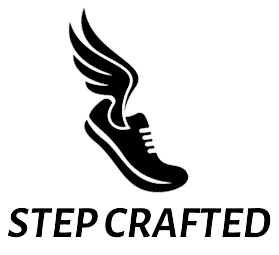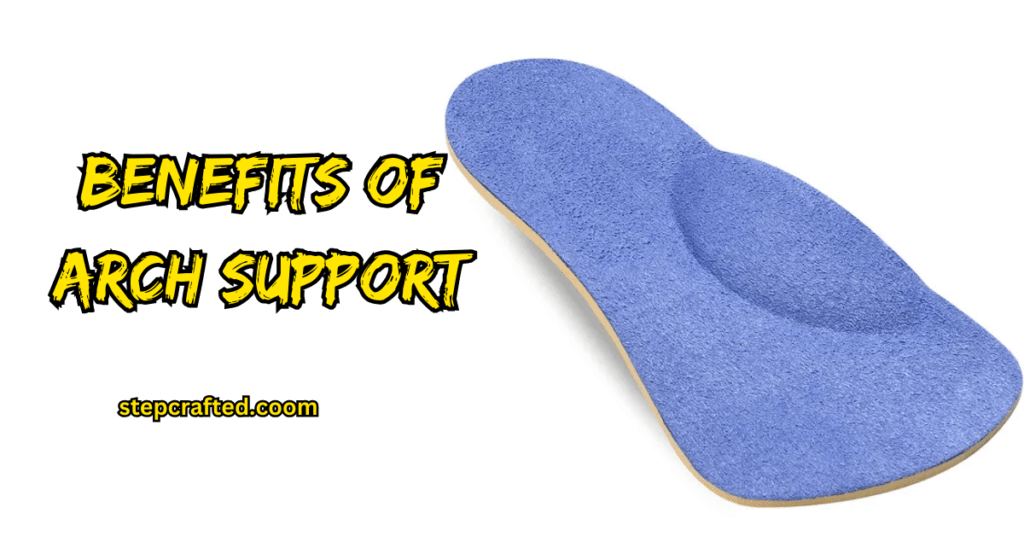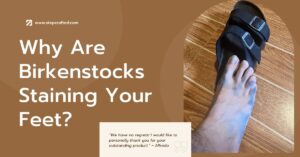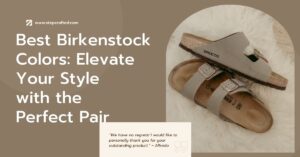Benefits of Arch Supports and Why You Should Wear Them
Arch supports are specialized devices designed to provide support for the arches of your feet, offering several benefits that can improve overall foot health and comfort.
Contents
ToggleThey help distribute pressure evenly across your feet, reducing the strain on the arches and preventing conditions such as plantar fasciitis, flat feet, and arch pain.
By aligning your feet properly, arch supports can also improve your posture and gait, which in turn can alleviate pain in your knees, hips, and back.
Additionally, wearing arch supports can enhance the fit and comfort of your shoes, making physical activities and long periods of standing more comfortable.
Whether for daily use or specific athletic activities, incorporating arch supports into your footwear can lead to significant improvements in foot health and overall well-being.
What Are Arch Supports?
Arch supports are devices inserted into shoes designed to provide extra support for the foot’s arch.
They help evenly distribute pressure across the foot, alleviate pain from conditions like plantar fasciitis, and improve posture and gait. Suitable for daily wear and specific activities, they enhance comfort and foot health.
Importance of Arch Supports
Arch supports play a crucial role in maintaining foot health by offering support to the foot’s arch and reducing strain and discomfort.
They help in evenly distributing foot pressure, alleviating pain from various foot conditions, improving posture, and enhancing gait.
Incorporating arch supports into footwear can significantly improve comfort and prevent potential foot problems.
Understanding Your Arch
Understanding your arch type is essential for foot health. Arches vary in height and flexibility, influencing how you walk and stand.
Identifying whether you have a high, low, or neutral arch helps in selecting the right footwear and supports, ensuring proper alignment, reducing pain, and preventing injuries. It’s a key step in personalized foot care.
Types of Arches
There are three primary types of foot arches, each affecting your gait and foot health differently:
- High Arches (Pes Cavus): This type is characterized by a noticeably high arch beneath the foot. People with high arches may be prone to underpronation (supination), where the foot rolls outward when walking or running. This can lead to increased stress on the ankles and outer toes. High arches often require supportive shoes and custom arch supports to distribute pressure more evenly and provide stability.
- Low Arches (Flat Feet or Pes Planus): Individuals with low arches or flat feet have a minimal arch definition, causing the foot to roll excessively inward (overpronation). This can lead to foot, ankle, knee, and back pain due to improper alignment. Shoes with structured support and orthotics designed for flat feet can help correct overpronation and alleviate associated discomfort.
- Neutral Arches: A neutral arch offers a balanced arch height, providing natural shock absorption and alignment. This arch type is less prone to injury but can still benefit from shoes with adequate support to maintain proper foot alignment and comfort.
Normal Arch
A normal arch, or neutral arch, strikes a balance in height and flexibility, promoting efficient weight distribution and shock absorption during movement.
This arch type supports natural foot alignment, minimizing the risk of pain and injury. Individuals with normal arches typically require standard support in footwear for optimal comfort and performance.
Flat Arch
A flat arch, or flat foot, is characterized by a minimal arch curve, leading to the foot’s sole almost entirely touching the ground.
This condition can cause overpronation, where the foot rolls inward excessively, potentially resulting in pain and alignment issues. Supportive shoes and orthotics are often recommended to mitigate discomfort and improve stability.
High Arch
A high arch, or pes cavus, features an unusually steep curve under the foot, leading to less surface area touching the ground.
This can result in poor shock absorption and added stress on the ball and heel of the foot. High arches often require shoes with extra cushioning and arch support to enhance comfort and stability, and to reduce the risk of pain and injury.
How Do Arch Supports Help Me?
Arch supports offer numerous benefits that contribute to improved foot health and overall well-being:
- Even Pressure Distribution: They help distribute body weight evenly across the foot, reducing stress on the arch.
- Pain Relief: By supporting the arch, they alleviate pain caused by conditions like plantar fasciitis, flat feet, and arch strain.
- Improved Posture: Proper arch support can correct foot alignment, which in turn enhances overall posture, reducing strain on the back, hips, and knees.
- Enhanced Stability: They provide a stable base that helps improve balance and foot positioning, reducing the risk of falls.
- Injury Prevention: By correcting abnormal foot motion, such as overpronation or supination, arch supports can prevent injuries related to improper foot alignment.
- Increased Comfort: They make standing, walking, and running more comfortable, especially for individuals who spend long hours on their feet.
- Better Athletic Performance: For athletes, arch supports can improve foot mechanics, leading to better performance and reduced risk of sport-related foot injuries.
- Enhanced Shoe Fit: They can improve the fit of shoes, filling in gaps for those with high arches or adding support for those with flat feet.
- Reduced Fatigue: By improving foot mechanics and alignment, they can reduce foot and leg fatigue after long periods of standing or walking.
- Long-Term Foot Health: Regular use of arch supports can contribute to long-term foot health, preventing the development of more serious conditions and maintaining mobility.
Benefits of Wearing Arch Supports
Wearing arch supports offers significant benefits for foot health and overall comfort. They provide crucial support for the foot’s arch, aiding in the even distribution of body weight and reducing pressure on the feet.
This can alleviate pain from common conditions such as plantar fasciitis, flat feet, and overpronation. Additionally, arch supports help improve posture and foot alignment, which can reduce strain on the knees, hips, and back, leading to better overall musculoskeletal health.
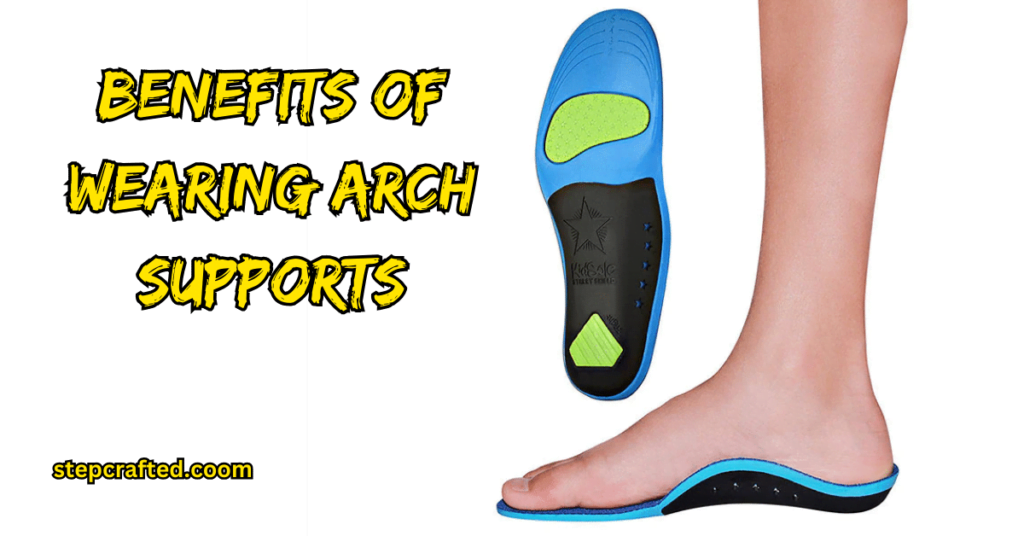
For athletes and active individuals, they can enhance athletic performance by improving foot mechanics and stability.
Arch supports also increase comfort during long periods of standing or walking, making them a valuable addition to anyone’s footwear, especially for those with specific foot conditions or those seeking to prevent future foot problems.
Arch Supports Help Distribute Pressure
Arch supports are designed to distribute pressure evenly across the foot, mitigating localized stress on the arches.
This even distribution helps prevent conditions like plantar fasciitis and arch pain by reducing the burden on specific areas of the foot, thereby enhancing comfort and stability during both movement and rest.
Arch Supports Provide Support
Arch supports offer essential support to the foot’s arch, helping to maintain its natural structure and alignment.
This support is crucial in preventing the arch from collapsing under body weight, thereby reducing the risk of foot pain, overpronation, and related conditions like flat feet and plantar fasciitis.
Lessen or Prevent Pain
By providing critical support to the foot’s arch, arch supports can significantly lessen or even prevent pain.
They alleviate stress on the arch and other parts of the foot, reducing symptoms of plantar fasciitis, tendonitis, and flat feet. This preventive measure ensures greater comfort and improved foot health over time.
Arch Supports to Prevent Your Arches From Harm
Arch supports are designed to shield your arches from harm by offering robust support and reducing excessive strain during activities.
They help maintain proper foot alignment, preventing the arch from collapsing, which can lead to conditions like plantar fasciitis and flat feet, thus safeguarding the foot’s natural structure and function.
Provide Stability And Balance
Arch supports enhance stability and balance by ensuring proper foot alignment and distributing pressure evenly across the foot.
This improved foundation helps correct gait and posture, reducing the risk of falls and injuries. It’s especially beneficial for those with uneven arches, providing the necessary support to navigate various terrains confidently.
What Are the Best Arch Supports Available?
The best arch supports vary based on individual needs, foot type, and activity level. Popular choices include;
- Superfeet Green Insoles: Ideal for high arches, offering maximum support and shock absorption.
- Powerstep Pinnacle Orthotic Insoles: Versatile and suitable for various arch types, these provide balanced cushioning and support.
- Spenco Polysorb Cross Trainer: Great for athletes, offering energy return and cushioning.
- Sof Sole Arch Insoles: Designed for people with low to neutral arches, focusing on comfort and support.
- Walk-Hero Plantar Fasciitis Feet Insoles: Specifically targeted at alleviating plantar fasciitis pain while providing arch support.
- Dr. Scholl’s Custom Fit Orthotic Inserts: Customizable to your foot’s needs, offering tailored support and comfort.
It’s essential to consider specific foot concerns, such as plantar fasciitis or flat feet, and to try different types to find the most comfortable and supportive option for your feet. Consulting with a podiatrist can also help in making the best choice.
1. LFS-1000 Premium Neutral Orthotic
The LFS-1000 Premium Neutral Orthotic offers superior support and comfort for a wide range of foot types.
Designed with premium materials, it provides a perfect balance of cushioning and stability, ideal for everyday wear. Its neutral arch support enhances natural foot alignment, making it versatile for various shoe styles.
2. LFS-3000/3500 Sport Neutral Orthotic
The LFS-3000/3500 Sport Neutral Orthotic Arch Supports are engineered for athletes and active individuals seeking balanced support and performance enhancement in their footwear.
These orthotics feature a neutral arch design, making them suitable for a wide range of foot types. Constructed with durable materials that withstand rigorous activities, they offer excellent shock absorption and energy return, crucial for high-impact sports.
The design promotes proper alignment and gait, reducing the risk of injuries. Breathable and comfortable, they fit seamlessly into sports shoes, providing an optimal blend of stability, cushioning, and support to maintain foot health during intense physical activities.
3. Sovella Dress Orthotic
Sovella Dress Orthotic Arch Supports are specifically designed for use in dress shoes, offering a slim profile that doesn’t compromise on support.
These orthotics provide targeted arch support, enhancing comfort and stability in formal footwear. Ideal for individuals who need corrective support without the bulkiness of traditional orthotics.
4. Custom Molded Arch Supports
Custom molded arch supports are tailored to fit the unique contours of your feet, providing precise support and comfort.
Created from an impression of your foot, they ensure optimal alignment, distribute pressure evenly, and can alleviate pain from conditions like plantar fasciitis. Ideal for those with specific foot issues or hard-to-fit arches.
What Are Orthotics?
Orthotics are custom or over-the-counter devices inserted into shoes to support and align the foot. They help correct foot abnormalities, distribute pressure evenly, reduce pain, and prevent injury.
Orthotics can be tailored to individual needs, addressing specific foot conditions like flat feet, plantar fasciitis, and overpronation.
Things To Keep In Mind When Buying Insoles/Inserts & Orthotics
When buying insoles, inserts, or orthotics, consider the following:
- Foot Arch Type: Identify your arch type (high, low, or neutral) to find the correct support.
- Purpose: Determine whether you need them for daily wear, sports, or specific foot conditions.
- Material: Look for materials that offer the right balance of support and cushioning. Memory foam, gel, and rigid plastics serve different needs.
- Fit: Ensure they fit well within your shoes without crowding your feet.
- Shoe Compatibility: Check that the insoles or orthotics are compatible with your shoe type and size.
- Activity Level: Consider your activity level; athletes might need more support and shock absorption.
- Durability: Quality materials and construction mean longer-lasting support.
- Brand Reputation: Choose products from reputable brands known for their efficacy and quality.
- Comfort: Comfort is key. Look for insoles or orthotics that feel good from the start.
- Professional Advice: If possible, seek advice from a healthcare professional, especially for specific foot conditions, to ensure you’re making the best choice for your feet.
Selecting the right insoles, inserts, or orthotics can significantly impact your foot comfort and overall health, so take the time to research and choose wisely.
Sizing
When buying insoles, inserts, or orthotics, sizing is crucial. Ensure they match your shoe size for a snug fit. Consider trim-to-fit options for customization.
Check thickness for adequate toe room. Remember, the right size enhances comfort, support, and effectiveness, preventing slippage and discomfort during wear.
Placement
When placing insoles, inserts, or orthotics in your shoes, ensure they lie flat and cover the entire footbed without bunching up.
Remove existing insoles if necessary for a better fit. Align them properly with the heel and arch area for optimal support and comfort, avoiding any misplacement that could affect foot alignment.
Your Arch Type
Identifying your arch type is crucial for optimal foot support. High arches may require more cushioning, flat arches need structured support, and neutral arches benefit from moderate support.
Understanding your arch type helps select the right footwear and insoles, enhancing comfort, improving gait, and preventing foot-related issues.
Materials
When selecting insoles, inserts, or orthotics, material choice is key. Foam offers cushioning and comfort, gel absorbs shock, and hard plastics ensure structural support.
Consider breathability for moisture control and durability for longevity. The right material balances comfort, support, and wear resistance to suit your specific needs.
Footbed Type
When choosing insoles, inserts, or orthotics, consider the footbed type. Rigid footbeds offer maximum support for structural foot issues, semi-rigid provide balanced support and flexibility, and cushioned footbeds enhance comfort for everyday wear.
Selecting the appropriate footbed type ensures proper alignment, support, and relief for specific foot conditions.
Common Signs You Need Arch Support
Common signs you need arch support include frequent foot pain, especially in the arch or heel, flat feet, or overly high arches, uneven shoe wear, standing discomfort, and foot fatigue.
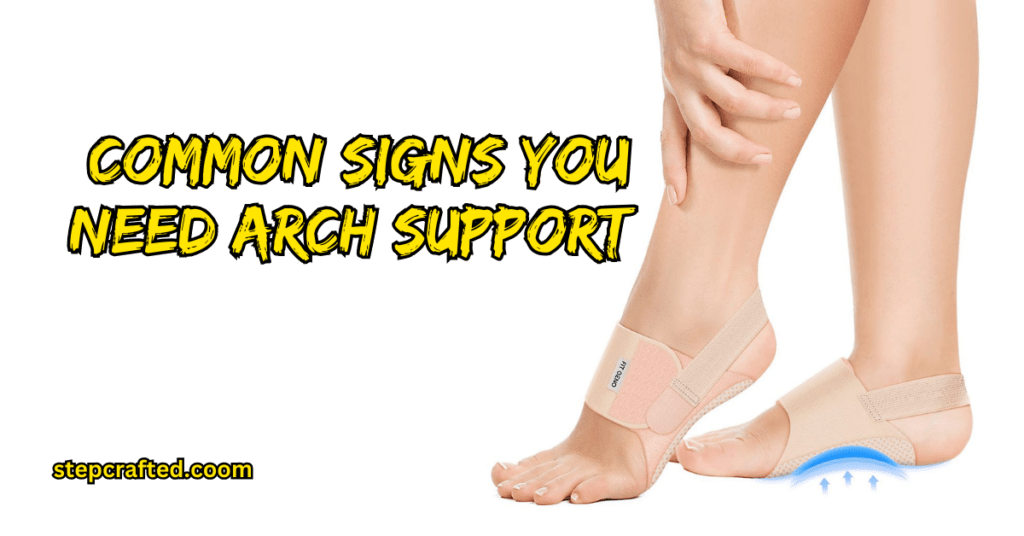
Experiencing pain in your knees, hips, or back when walking can also indicate the need for arch support.
1. You Stand for More than Five Hours a Day
If you stand for more than five hours a day, arch supports can be crucial. They provide essential support, reducing strain on your feet, legs, and back.
Arch supports help distribute pressure evenly, prevent foot fatigue, and minimize discomfort, making long periods of standing more manageable and less taxing on your body.
2. You’re Recovering from a Lower-Limb Injury
When recovering from a lower-limb injury, using arch supports can be beneficial. They help stabilize and support the foot, promoting proper alignment and reducing stress on the injury site.
Arch supports can accelerate healing by ensuring even weight distribution, preventing further strain, and facilitating a safer, more comfortable rehabilitation process.
3. You Have Foot or Heel Pain
If you experience foot or heel pain, arch supports can offer relief by providing targeted support to the arch area, reducing strain on the plantar fascia.
They help alleviate symptoms of conditions like plantar fasciitis and heel spurs, distributing pressure evenly across the foot and minimizing discomfort during movement.
4. You Have Worn-Out Shoes
Worn-out shoes lack proper support, leading to increased foot strain and discomfort. Adding arch supports can rejuvenate these shoes, offering enhanced stability and cushioning.
They compensate for the diminished support, helping to maintain proper foot alignment and reduce the risk of pain and injuries associated with unsupportive footwear.
5. You Have a Flat Arch or a High Arch
If you have a flat arch or a high arch, using arch supports is essential. For flat arches, they provide the necessary lift and support to reduce overpronation.
For high arches, they offer cushioning and shock absorption, mitigating stress on the heel and ball of the foot, ensuring comfort, and preventing pain.
6. You Are Pregnant
During pregnancy, arch supports can be incredibly beneficial due to increased weight and changes in posture, leading to foot strain and discomfort.
They provide essential support, helping to distribute weight evenly, reduce foot pain, and alleviate pressure on the arches, making standing and walking more comfortable during this period.
Types of Arch Supports
Rigid Arch Supports: Designed for structural support and alignment correction, ideal for minimizing foot movement and correcting overpronation or supination.
Semi-Rigid Arch Supports: Offer a balance between support and flexibility, suitable for athletes or active individuals needing dynamic foot stabilization.
Cushioned Arch Supports: Focus on providing comfort and shock absorption, best for high arches or those standing for long periods.
Heat-Moldable Arch Supports: These can be customized to the wearer’s foot shape, offering a personalized fit and support.
Low Arch (Flat Feet) Supports: Specifically designed to support flat arches, helping to distribute pressure evenly and improve walking comfort.
High Arch Supports: Targeted at individuals with high arches, providing extra cushioning and support where the foot naturally lacks.
Orthotic Insoles: Prescription or over-the-counter, tailored to address specific foot conditions like plantar fasciitis, diabetes, or arthritis.
Memory Foam Supports: Adapt to the shape of the foot for a customized feel, offering comfort and mild support.
Gel Arch Supports: Utilize gel padding for shock absorption and relief from pressure points, suitable for sensitive feet.
3/4 Length Arch Supports: Designed to fit dress shoes or smaller footwear, focusing on arch and heel support without full foot coverage.
FAQs
Is it Good to Wear Arch Supports?
If your arches are not adequately supported, spine alignment may be negatively affected, potentially leading to lower back pain. Arch supports can improve your spine’s alignment, helping to alleviate back pain.
How Do I Know if I Need Arch Support?
Frequently sore feet and ankles — If you spend a lot of time on your feet or are physically active, there’s a limit to how sore your feet should get. Excessive soreness could be a sign that your feet are working harder than they need to due to arch abnormalities
Who Benefits From Arch Support?
If you work on your feet, live an active lifestyle, or have foot, knee, hip or back pain – you should try Good Feet Arch Supports. Come in for a free fitting and test walk today.
What is the Point of Arch Support?
Arch support insoles or inserts can redistribute pressure and improve shock absorption, reducing arch pain, ankle pain, painful heels, and general discomfort in your feet, legs, and lower back caused by the extra stress on your feet.
What is the Disadvantage of Arch Support?
Arguments & findings against arch support: This is because it acts similarly to a rubber ball. If you’re wearing a padded shoe, you are likely to strike the ground with more force. You will see a 12% impact on your knees when wearing padded shoe
Do Arch Supports Hurt at First?
If you have flat feet, an orthotic may hurt your arches at first. This is due to the pressure an insole puts on your arch. The pressure may cause a little pain, due to your foot not being used to it. Once your foot adjusts to the pressure and support it’s receiving, you’ll be good to go!
What are the Disadvantages of Flat Feet?
Flat feet are a common cause of general musculoskeletal pain and problems. Your body’s balance begins in the feet; when the feet do not provide proper support, it can raise your risk for joint problems caused by poor posture and unnatural gait.
How Do I Know My Arch Type?
What Your Footprint Means
- Half-filled. If the sole of your footprint is half-filled, you have a normal arch. …
- Filled. If you see your entire footprint, you have a flat arch. …
- Empty. If you only see the heel and ball of your footprint (or a little of the sole between), your feet have high arches.
